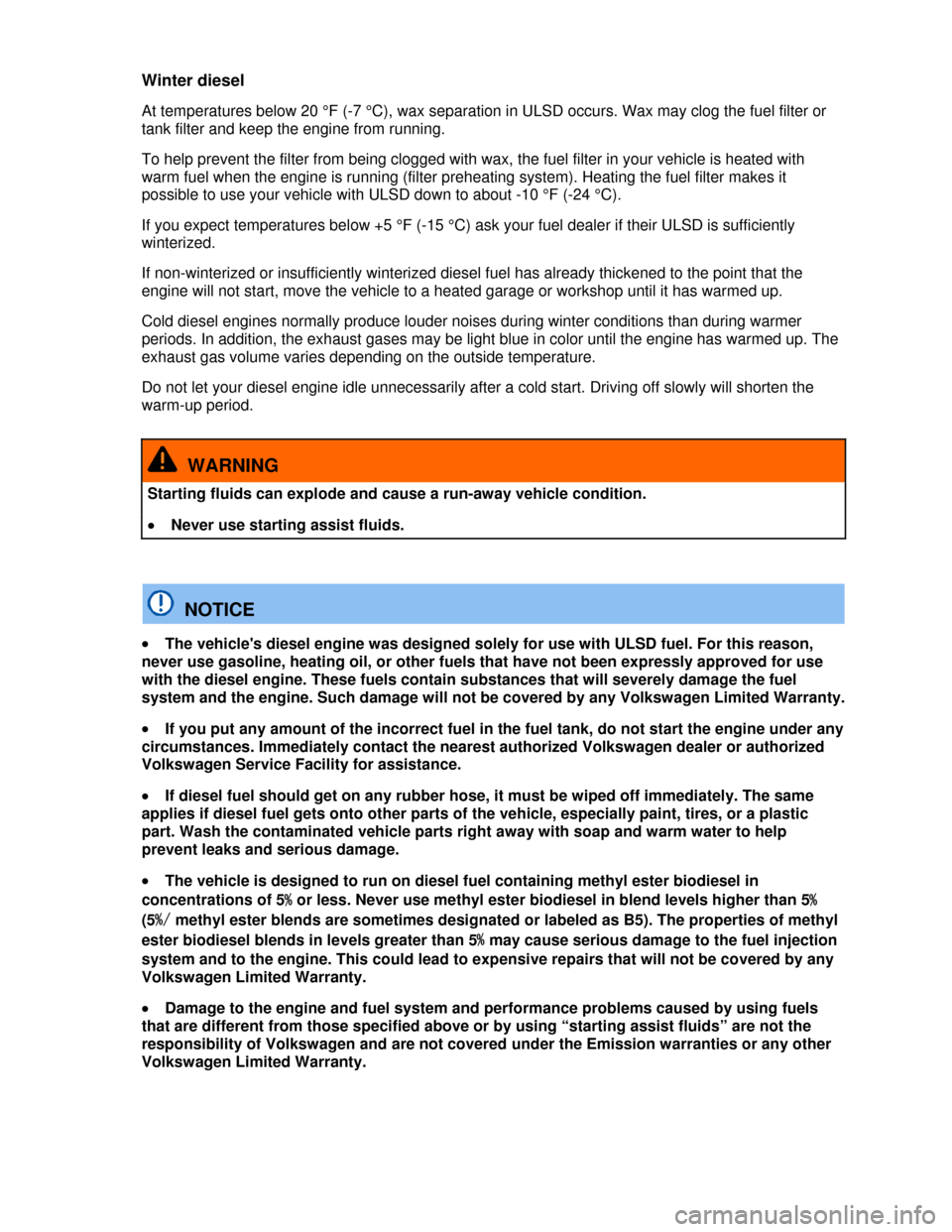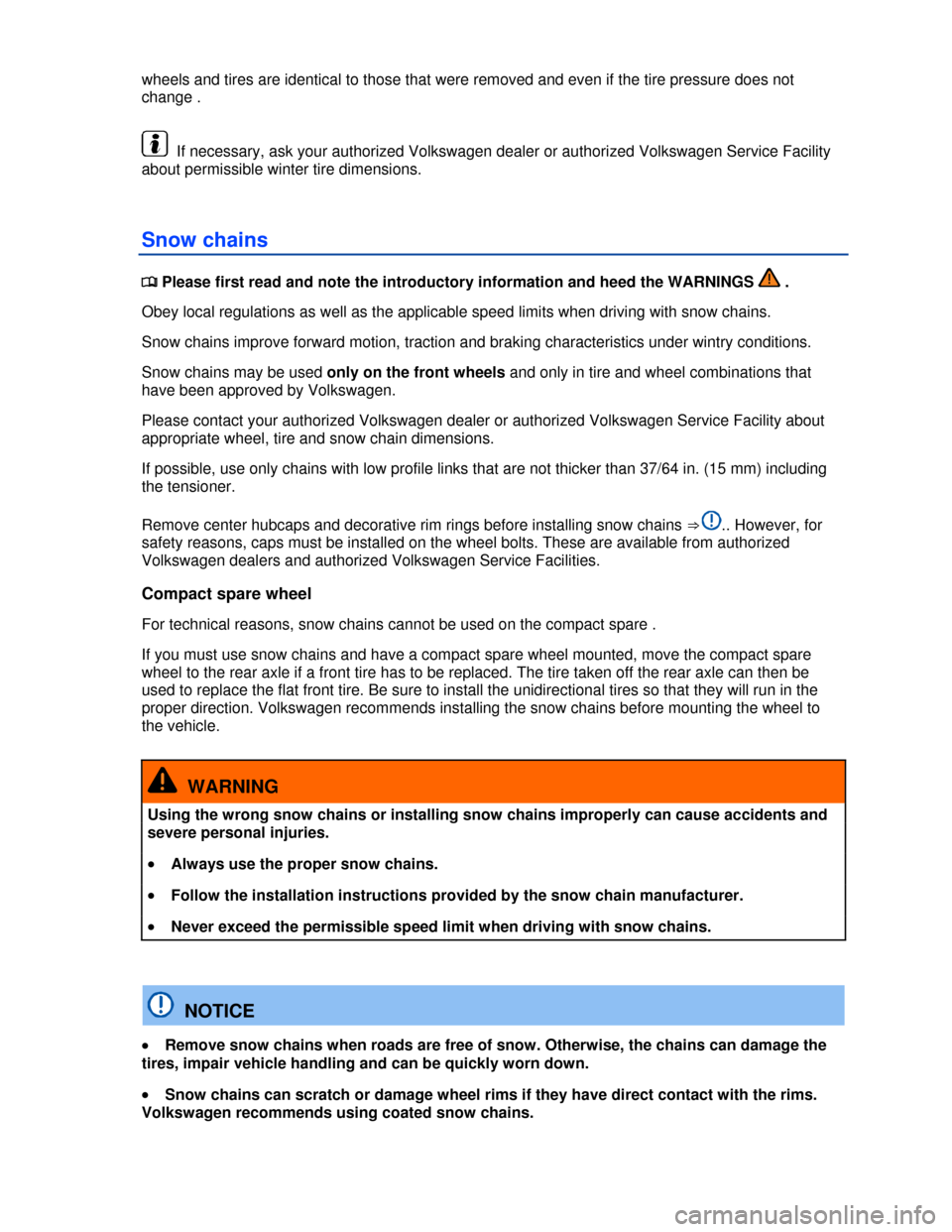winter tires VOLKSWAGEN JETTA 2013 1B / 6.G Owners Manual
[x] Cancel search | Manufacturer: VOLKSWAGEN, Model Year: 2013, Model line: JETTA, Model: VOLKSWAGEN JETTA 2013 1B / 6.GPages: 339, PDF Size: 4.83 MB
Page 191 of 339

Under the same conditions, the vehicle consumes more fuel in winter than in summer.
“Letting the engine run to warm up” is not only illegal in some places, but also technically not
necessary and wastes fuel.
Adjust the tire pressure
The proper tire pressure helps reduce rolling resistance as well as fuel consumption.
When purchasing new tires, always make sure that the tires are optimized for lower rolling resistance.
Use low viscosity engine oil
Fully “synthetic,” low viscosity engine oils that expressly comply with Volkswagen oil quality standards
reduce fuel consumption. Low viscosity engine oils reduce the frictional resistance on the engine and
are distributed more evenly and quickly, particularly when cold-starting the engine. The effect is
particularly apparent in vehicles that frequently travel short distances.
Always ensure the right engine oil level is maintained and keep to the scheduled service intervals
(engine oil changes).
Make sure the engine oil that you purchase expressly complies with Volkswagen oil quality standards
and is the oil approved by Volkswagen for your vehicle.
Avoid unnecessary weight
The lighter the vehicle, the more economical and eco-friendly it will be. For example, an extra 220 lbs
(100 kg) of weight increases fuel consumption by up to 1 pint per 60 miles (0.3 l/100 km).
Remove all unnecessary items and unnecessary dead weight from the vehicle.
Remove unnecessary aftermarket components
The more aerodynamic the vehicle, the less fuel it will consume. Aftermarket components such as
bicycle racks reduce its aerodynamic performance.
Therefore, remove unnecessary structures and unused rack systems, particularly if planning to drive at
higher speeds.
Page 230 of 339

Winter diesel
At temperatures below 20 °F (-7 °C), wax separation in ULSD occurs. Wax may clog the fuel filter or
tank filter and keep the engine from running.
To help prevent the filter from being clogged with wax, the fuel filter in your vehicle is heated with
warm fuel when the engine is running (filter preheating system). Heating the fuel filter makes it
possible to use your vehicle with ULSD down to about -10 °F (-24 °C).
If you expect temperatures below +5 °F (-15 °C) ask your fuel dealer if their ULSD is sufficiently
winterized.
If non-winterized or insufficiently winterized diesel fuel has already thickened to the point that the
engine will not start, move the vehicle to a heated garage or workshop until it has warmed up.
Cold diesel engines normally produce louder noises during winter conditions than during warmer
periods. In addition, the exhaust gases may be light blue in color until the engine has warmed up. The
exhaust gas volume varies depending on the outside temperature.
Do not let your diesel engine idle unnecessarily after a cold start. Driving off slowly will shorten the
warm-up period.
WARNING
Starting fluids can explode and cause a run-away vehicle condition.
�x Never use starting assist fluids.
NOTICE
�x The vehicle's diesel engine was designed solely for use with ULSD fuel. For this reason,
never use gasoline, heating oil, or other fuels that have not been expressly approved for use
with the diesel engine. These fuels contain substances that will severely damage the fuel
system and the engine. Such damage will not be covered by any Volkswagen Limited Warranty.
�x If you put any amount of the incorrect fuel in the fuel tank, do not start the engine under any
circumstances. Immediately contact the nearest authorized Volkswagen dealer or authorized
Volkswagen Service Facility for assistance.
�x If diesel fuel should get on any rubber hose, it must be wiped off immediately. The same
applies if diesel fuel gets onto other parts of the vehicle, especially paint, tires, or a plastic
part. Wash the contaminated vehicle parts right away with soap and warm water to help
prevent leaks and serious damage.
�x The vehicle is designed to run on diesel fuel containing methyl ester biodiesel in
concentrations of 5% or less. Never use methyl ester biodiesel in blend levels higher than 5%
(5%/ methyl ester blends are sometimes designated or labeled as B5). The properties of methyl
ester biodiesel blends in levels greater than 5% may cause serious damage to the fuel injection
system and to the engine. This could lead to expensive repairs that will not be covered by any
Volkswagen Limited Warranty.
�x Damage to the engine and fuel system and performance problems caused by using fuels
that are different from those specified above or by using “starting assist fluids” are not the
responsibility of Volkswagen and are not covered under the Emission warranties or any other
Volkswagen Limited Warranty.
Page 270 of 339

102 1874 lbs (850 kg)
103 1929 lbs (875 kg)
104 1984 lbs (900 kg)
110 2337 lbs (1060 kg)
Speed rating code letter
The speed rating code letter indicates the maximum permissible road speed of the tires.
P up to 93 mph (150 km/h)
Q up to 99 mph (160 km/h)
R up to 106 mph (170 km/h)
S up to 112 mph (180 km/h)
T up to 118 mph (190 km/h)
U up to 124 mph (200 km/h)
H up to 130 mph (210 km/h)
V up to 149 mph (240 km/h)
Z over 149 mph (240 km/h)
W up to 168 mph (270 km/h)
Y up to 186 mph (300 km/h)
Some tire manufacturers label tires with a maximum permissible road speed above 149 mph
(240 km/h) with the letter combination “ZR.”
WARNING
Using incorrect or unmatched tires and/or wheels or improper tire and wheel combinations
can lead to loss of control, collision and serious personal injury.
�x Always use tires, wheels and wheel bolts that meet the specifications of the original
factory-installed tires or other combinations that have been specifically approved by the
vehicle manufacturer.
�x All 4 wheels must be fitted with radial tires of the same type, the same size (tread
circumference), and the same tread pattern. Driving with different tires reduces vehicle
handling and can lead to a loss of control.
�x Never drive faster than the maximum speed for which the tires installed on your vehicle
are rated because tires that are driven faster than their rated speed can fail suddenly.
�x Overloading tires can cause heat build-up, sudden tire failure, including a blowout and
sudden deflation and loss of control.
�x Temperature grades apply to tires that are properly inflated and not over- or underinflated.
Winter tires
�
Page 271 of 339

Winter tires improve the handling characteristics of your vehicle significantly when driving under wintry
road conditions. Summer tires have less traction on snow and ice because of their design (width,
rubber composition, tread design). Volkswagen strongly recommends that you always have winter
tires or all-season tires installed on all 4 wheels on your vehicle, especially when winter road
conditions are expected. Winter tires also improve the vehicle's braking performance and help reduce
stopping distances during winter weather. Volkswagen recommends installing winter tires once
temperatures are below +45 °F (+7 °C).
Winter tires are no longer suitable for winter driving once the tread pattern is worn down to a depth of
3/16 in (4.8 mm). In addition, winter tire performance decreases with age – independent of the tread
profile depth.
When using winter tires:
�x Obey state and country-specific legal requirements.
�x Install winter tires on all 4 wheels.
�x Use winter tires only under wintry road conditions.
�x Only use winter tires with dimensions approved for the vehicle.
�x Use only winter tires of the same tire belt design, the same dimensions (tread circumference), and
the same tread design.
�x Follow speed restrictions according to the winter tire's speed rating code letter ⇒.
Speed restrictions
Winter tires are certified up to a top speed identified by speed rating code letters on the side wall .
In some vehicle models it is possible to set a speed warning in the menu in the instrument cluster
display
Top speed rating and tire inflation pressure for V winter tires depend on the engine installed in your
vehicle. Be sure to ask you authorized Volkswagen dealer or authorized Volkswagen Service Facility
about the maximum permissible speed and the required tire inflation pressure for the winter tires that
you plan to use.
WARNING
Driving faster than the maximum speed for which the winter tires on your vehicle were
designed can cause sudden tire failure including a blowout and sudden deflation, loss of
control, crashes and serious personal injuries.
�x Winter tires have a maximum speed rating that may be lower than your vehicle's maximum
speed.
�x Never drive faster than the maximum speed for which the winter tires installed on your
vehicle are rated because tires that are driven faster than their rated speed can fail suddenly.
�x Never exceed the maximum load rating for the winter tires installed on your vehicle.
Install summer tires promptly in the spring. Summer tires offer better handling characteristics for
temperatures above +45 °F (+7 °C). They are quieter, do not wear as quickly, and reduce fuel
consumption.
The Tire Pressure Monitoring System must be recalibrated using the SET button whenever you
remove and remount or change any wheel or tire on the vehicle, even if the reinstalled or replacement
Page 272 of 339

wheels and tires are identical to those that were removed and even if the tire pressure does not
change .
If necessary, ask your authorized Volkswagen dealer or authorized Volkswagen Service Facility
about permissible winter tire dimensions.
Snow chains
�